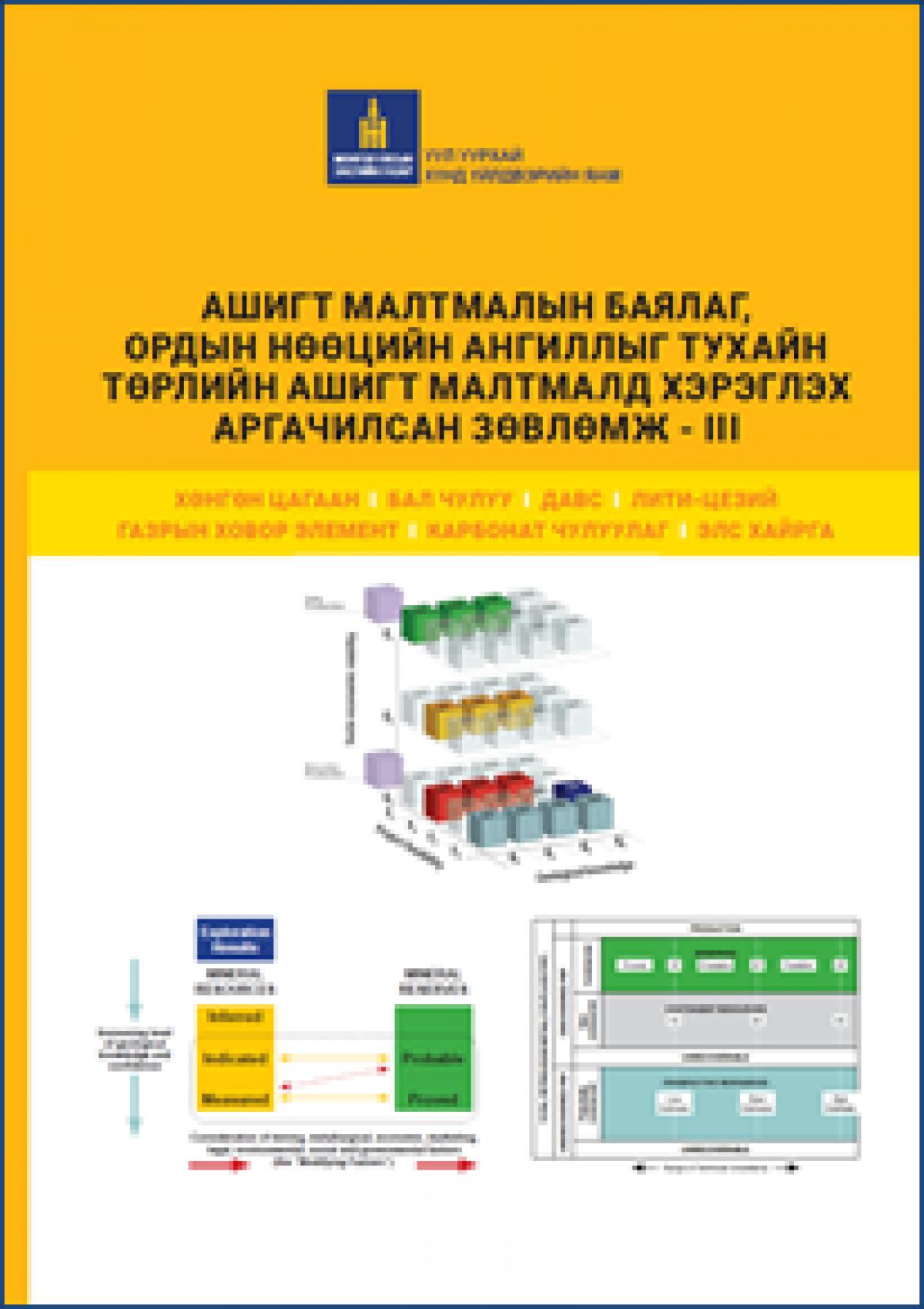Nov 10, 2021
Methodological guidelines for prospecting, exploration and reporting of resources and reserves for the key minerals
(The following article was published in "Explorer" journal #63 of 2021. pp. 12-14)
Delgersaikhan. A.*, Ukhnaa. G.**, Altankhuyag. D.***, Altanzul. B.**, Byambajav. Ch.*
* Geological research and planning division, MMHI
** Center for Mineral Resources, Geoinformation and Training
*** “Erdenet Mining Corporation” SOE
As approved by the Decree No. A/195, 2018 of Minister of Mining and Heavy Industry, the project methodological guidelines for the application of the mineral resources and reserve classification were planned to be developed for more than 30 mineral types based on their importance in geological research, mining production, and contribution to the country’s economy, including high-tech raw materials, as well as the most common minerals resources, which could have potential in the future.
On the 80th anniversary of the geological sector establishment in Mongolia, a total of 8 methodological guidelines were developed in 2019, 1000 copies were published and made available to the public. These include guidelines for energy raw materials such as uranium-thorium, coal, oil and guidelines for metallic minerals such as iron, gold, copper; guidelines for chemical and metallurgical raw materials fluorspar; as well as a guideline for minerals that form placer deposits such as gold, platinum, tin, wolfram, titanium, zircon, garnet and diamond.
Guidelines of zinc-lead, molybdenum, silver, tungsten and tin, important raw materials for the export and economy of Mongolia, were approved by Decree No. A/153 of the Minister of Mining and Heavy Industry, June 11, 2021. Since then, guidelines for rare earth elements, essential for the development of science and technology, as well as lithium-cesium, and graphite, used in the energy storage or as a raw material for batteries, and “industrial minerals” such as sand-gravel, carbonate rocks, aluminum, and various mineral salts have been developed.
Volume 3, including the 7 types of methodological guidelines mentioned above, was published on the event of the 82nd anniversary of the Mongolian geological sector, marking the milestone of 20 methodological guidelines of minerals compiled and finalized by the cooperation of more than 50 certified professional and consulting geologists, and the guidelines are now available to the public through the websites of the Ministry of Mining and Heavy Industry, Mineral Resources and Petroleum Authority.
Following the issuance of these guidelines, any legal entity engaged in exploration activities in the territory of Mongolia, especially qualified specialists, will follow these guideliness in their mineral exploration and the Mineral Resources Professional Council (MRPC) is making extra effort to ensure this.
Out of a total of 176 reserve reports were discussed at the MRC meeting and reviewed by MRPAM in 2020, 92 (52%) reports had implemented the methodological guidelines. As for 2021, out of a total of 95 reserve reports discussed in the first 9 months, 57 (60%) reports had implemented the methodological guidelines for the 8 types of minerals mentioned above. The result of this project is reflected on the usage and the implementation of the guidelines within both foreign and domestic invested companies with geology-exploration and mining operations.
By determining standardized guidelines for mineral exploration by their types and ensuring their implementation, there will be increased clarity and efficiency in the stages of exploration, and the process of resource estimation and its registration. This is expected to reduce disputes, which will, in turn, improve the overall quality of exploration that could lead to increased investment and better initiation rate of explored projects.
Mongolia has made strong commitments, to bring the “Classification of Mongolia's mineral resources and reserves” on par with similar international standards and guidelines, since Mongolia's accession to the International Committee for the Reporting of Mineral Resources (CRIRSCO) in 2014. Notably as a result, it has become necessary to develop methodological and resource classification guidelines for each of the major types of minerals in our country. In this regard, we believe it’s possible to develop internationally accepted mineral resource exploration and resource classification methodological guidelines by cultivation our previous standards based on traditional foundations.
By doing so, there will be unified standards and guidelines for the identification and reporting of mineral resources, and by implementing them, the process of obtaining geological and exploration information, as well as mineral resources identification and registration will be clear, effective, and transparent, further improving its quality and completeness. These will help attract investment, improve decision-making, and put the explored deposits into economic circulation. Therefore, it is recommended that geologists who are conducting geological and exploration work in the future use this material as their main guideline.
The guidelines were developed the professional geologists with the participation of scientists and teachers with qualified consultation, and academic degrees in the field. The Editorial board and experts were appointed by the Ministry of mining and heavy industry among consultants and professional geologists.
Finally, we would like to thank all the geologists who participated and successfully implemented this project, the Mineral Research, Geoinformation and Training Center of the Mongolian University of Science and Technology, the Australia-Mongolia Extractives Program (AMEP), the German Federal Institute of Geosciences and Natural Resources (BGR) 's “Institutional and Human Resource Development in the Minerals Sector of Mongolia-II” project and the staff of Badrakh Energy LLC.



